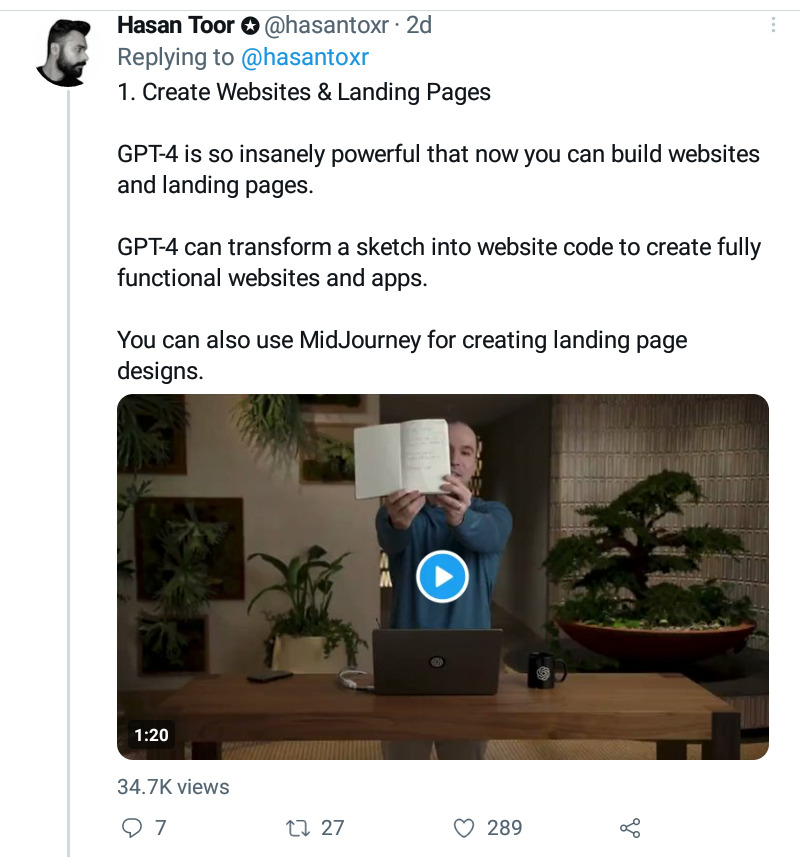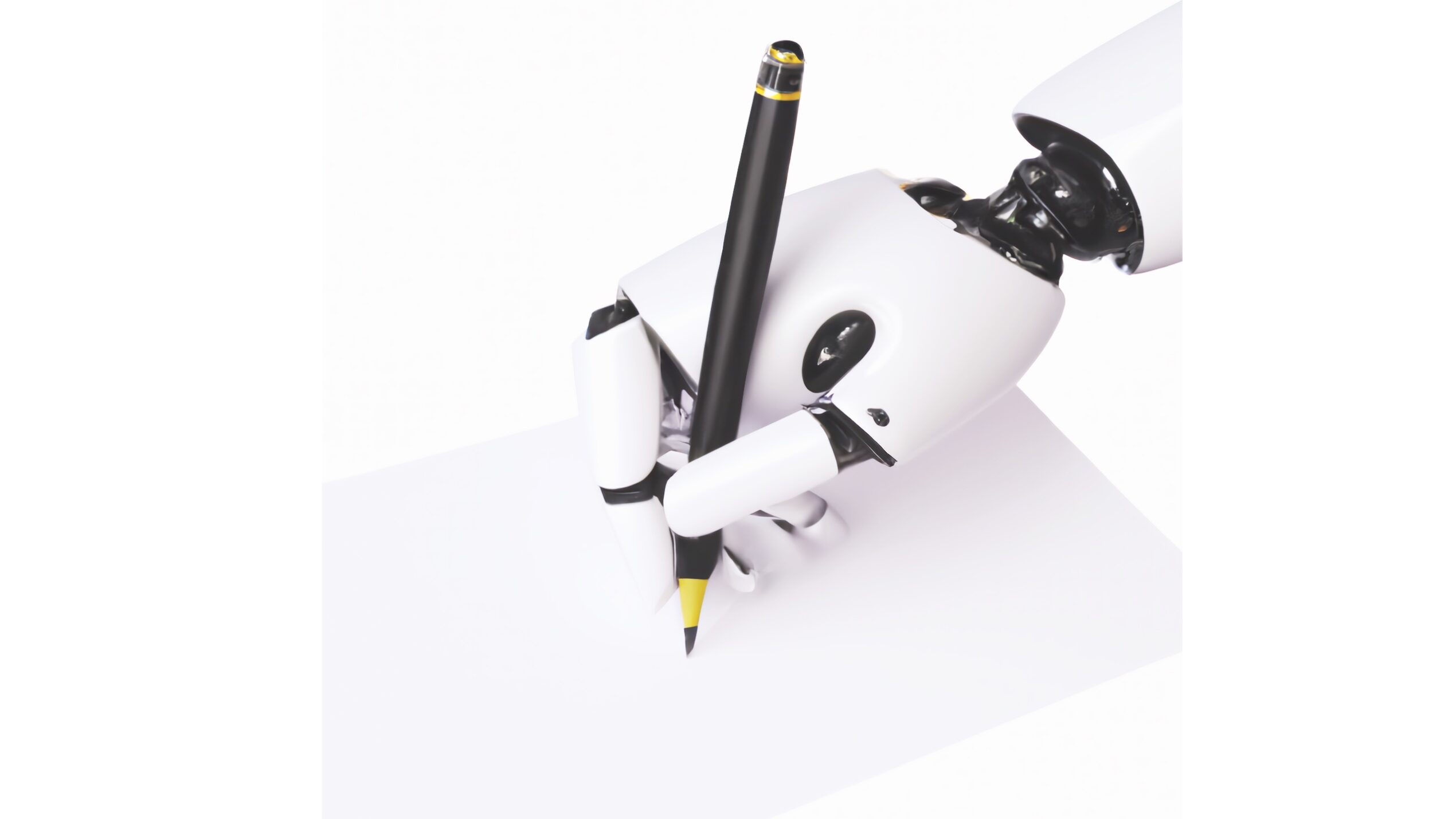AI is revolutionizing the way businesses operate, allowing them to streamline and automate operations for maximum efficiency. It also opened up opportunities for entrepreneurs to monetize their skills by harnessing the power of tools such as GPT-4. Here are 6 ways you can make money using GPT-4 and other AI tools.
GPT-4 is the latest and most advanced generative AI from OpenAI. It is the direct successor to ChatGPT, the large language model AI chatbot that has taken the internet by storm due to its unique ability to complete a variety of complex tasks. This new bot, GPT-4, boasts of several features superior to its predecessor that can be monetized.
Content writing
One way of making money is through content writing services. Thanks to GPT-4, ordinary people can write like pros by simply asking the AI chatbot via text to create content. Users can create cool and catchy content for things like captions, tweets, and LinkedIn content. Beware however, the output of text can contain errors that may need correcting before forwarding or publishing the content.
In a Twitter thread, digital creator and software engineer Hasan Toor shared insights on how to leverage the power of GPT-4 to incubate businesses. He showed how he prompted the AI to write a Twitter hook on “How to start freelancing in 7 days”.
2. Content Writing Services
Create eye catching content like captions, tweets, LinkedIn content etc
10x your copywriting with GPT-4.
Just provide a prompt to the GPT-4 to generate splendid content.
Prompt example:
Write a twitter Hook for "how to start freelancing in 7 days" pic.twitter.com/is8q0IvBIM
— Hasan Toor ✪ (@hasantoxr) March 21, 2023
GPT-4 is also useful for copywriting. If you have always wanted to write e-books, and didn’t have time or the ability, this has changed. With the right wording in your prompt, GPT-4 can help write things like e-books, design courses, and guides.
After writing a book, one can always turn to AI again, Stockimg.ai for example, to design the cover. There is a ready market for such books on platforms like Gumroad. You can even ask GPT-4 to write an article about how to make it as a freelance.
Creating websites and landing pages
Creating landing pages using GPT-4 can turn in some dollars. This is because landing pages are key in lead generation and customer acquisition. GPT-4 is capable of “analyzing website traffic and user behavior to create high-converting landing pages to help grow client base.” This can be a lucrative business venture that can be scaled up and generate revenue.

Toor said that GPT-4 “is insanely powerful [and] can transform a sketch into website code to create fully functional websites and apps.” Users can also leverage MidJourney, an AI image generator, to create landing page designs. A landing page is a “standalone web page that a person ‘lands’ on after clicking through from an email, ad, or other digital location.”
Translation services
As businesses expand their geographical reach, offering AI-powered language translation services may prove to be very valuable. GPT-4 can come in handy, helping users to translate manuals, training materials, and product descriptions for clients. This way, entrepreneurs can engage better with their customers.
Creating AI videos
Videos are an excellent tool for promoting products and services. Toor, the digital creator, said users can combine GPT-4 and other AI-powered products, such as Murf Studio, to create general and personalized videos that can be sold. This has the advantage of streamlining the production process, making it easier for entreprenuers to create high-quality videos without extensive video editing skills.
Murf is a web-based studio that provides creators with customisable features to make voice overs from scratch. The tool also works as a multimedia editor. Users can utilize hyper-realistic AI voices in over 15 languages and accents, which can be overlaid onto videos.
“Elegance is the only beauty that never fades.”
Samantha, our newest addition to Murf’s range of AI voices emanates elegance, class, grace, and confidence, all of which reflect the beauty of a brand.
For more: https://t.co/zYqrhjMyBo#AI #voiceover #luxuryad #AIVOICE #ad pic.twitter.com/AdNEF0IgxH
— Murf AI (@MURFAISTUDIO) May 25, 2022
YouTube scriptwriting
GPT-4 is useful for writing YouTube scripts within minutes, according to Toor. Here is what to do: quickly select a topic and give a prompt to the AI chatbot. After a few seconds, your video scripts will be ready. GPT-4 can help users save time on brainstorming ideas and creating content.
As businesses seek to remain relevant in the crowded online space, “scriptwriters can scale their business by producing catchy, high-converting scripts that commercially promote their client’s services and products.”
7. Youtube script writer
You can write YouTube scripts with ChatGPT in minutes.
Just pick a topic and provide a prompt to ChatGPT.
Within seconds, you will have your full-fledged video scripts ready. pic.twitter.com/x5IMJuus49
— Hasan Toor ✪ (@hasantoxr) March 21, 2023
Email marketing services
Lastly, you can leverage GPT-4 to offer AI-powered email marketing services. This is because 75% of small businesses make use of email marketing to reach their target markets and customers, experts say.

By automating the email marketing process, entrepreneurs can save time and money, allowing them to focus on other critical aspects of their etenterprise. GPT-4 can personalize emails to customers to “create a more interactive feedback loop that reduces marketing costs while increasing conversion rates.”
Also read: AI Tool Race Heats up and Everyone Wants to Win
GPT-4 offers exciting business opportunities for those looking to monetize AI. Its ability to create landing pages, offer translation services, generate AI videos, YouTube scriptwriting, and email marketing services can help entrepreneurs scale their businesses and tap into new revenue streams. As AI technology continues to evolve, entrepreneurs should be ready to capitalize on new tools that enhance business processes.









 and then
and then